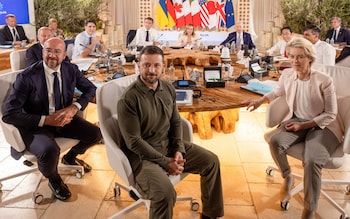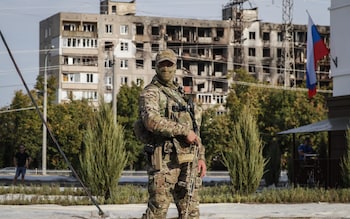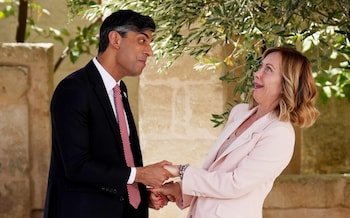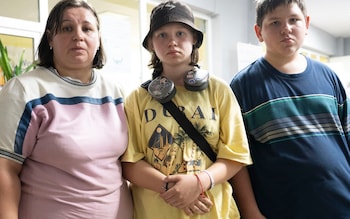European leaders bowed to American pressure and agreed a $50 billion loan deal for Ukraine on Thursday using the proceeds from frozen Russian assets.
G7 leaders in Italy announced that Ukraine would receive a major financial boost by the end of the year, as Western countries try to placate Volodymyr Zelensky ahead of next month’s Nato summit.
Under the deal, returns from $320 billion in frozen Russian central bank assets will be used to secure a loan of $50 billion, which can be used by Ukraine for its military or economic recovery.
Diplomatic sources told The Telegraph that Britain and the US had successfully overturned concerns about the plan from Germany, which worried it would set a legal precedent for countries making use of frozen assets.
Joe Biden called the loan deal a “significant outcome” that would be “put to work” for Ukraine in the coming months.
“We’re not backing down. In fact, we’re standing together against this illegal aggression,” the US president said at a joint press conference with Mr Zelensky, adding that the war had been a “test for the world” that the West had met.
The Ukrainian president hailed a “historic day” that would provide his country with sustainable support to win the war.

Rishi Sunak, the Prime Minister, said the loan would be “game changing” for Ukraine’s ability to ward off Russian attacks.
“It’s fantastic news, it’s something that I personally and the UK have been leading on and championing for some time now,” he said.
The deal came despite initial objections from Germany and Belgium, who had legal concerns about setting a precedent by using frozen assets to borrow.
Berlin has been accused by some Western officials of hampering support for Ukraine in recent months, amid a row between politicians in the country’s ruling coalition about spending public money on the war.
Around $220 billion of frozen Russian assets are held in the Belgian securities depository, Euroclear. Brussels had opposed interfering with the sum in any way for fear of undermining its banking sector.
The loan is the result of months of negotiation between G7 countries over how to use Russian assets frozen at the beginning of the war, most of which are in Europe.
The US had originally proposed to send the full $320 billion directly to Kyiv, but this was blocked by EU leaders over fears of legal repercussions from the Kremlin.
A second version of the plan, proposed by the EU, would have transferred the $5 billion annual interest earned from the assets to Ukraine, while leaving the underlying capital untouched.
The compromise agreed on Thursday will use the profits to secure a loan that will ultimately be guaranteed by the US Treasury, officials said.
Ursula von Der Leyen, the president of the European Commission, said that all members of the G7 would contribute to the loan but the extent of each country’s participation was still to be worked out.

A Foreign Office source said: “It’s always been the case that us and the US have been most forward leaning, needing to persuade the others.”
US officials hope the loan plan will avoid a “tantrum” from Mr Zelensky at next month’s Nato summit in Washington DC, where Ukraine is not expected to be offered a concrete timeline for joining the alliance.
At last year’s summit in Lithuania, Nato allies agreed to “extend an invitation to Ukraine to join the alliance when allies agree and conditions are met”. Mr Zelensky described the lack of a timeline as “unprecedented and absurd”.
In Washington, Ukraine is set to be shown a “well-lit bridge” to membership, but no further assurances on when its request to join the alliance will be granted.
The announcement of the loan came as the UK announced new sanctions on a “shadow fleet” of Russian tankers that have been used to circumvent British and G7 restrictions on oil exports.
It follows months of concern about funding for Ukraine, which was held up in the US Congress until April amid objections from Republicans.
Mr Zelensky warned that without a major cash injection from the West he would be unable to fend off Russian missile attacks on civilians in cities this summer, nor retake territory lost since Vladimir Putin’s invasion.
Congress eventually approved a $61 billion package, but Western leaders have been exploring further funding options that could be used if Donald Trump wins this year’s presidential election.
Mr Trump has signalled his opposition to spending US tax dollars on Ukraine, and told voters he would end the war “in one day” by pushing negotiations between Kyiv and Moscow.
The loan agreed on Thursday is expected to fund Ukraine’s war effort into 2025. Mr Biden and Mr Zelensky separately agreed a 10-year funding guarantee for Ukraine designed to futureproof US support.
Mr Biden skipped a G7 dinner hosted by Sergio Mattarella, the Italian president, on Thursday night. Officials cited his busy schedule, which has included two trips to Europe in as many weeks.
Disclaimer: The copyright of this article belongs to the original author. Reposting this article is solely for the purpose of information dissemination and does not constitute any investment advice. If there is any infringement, please contact us immediately. We will make corrections or deletions as necessary. Thank you.



